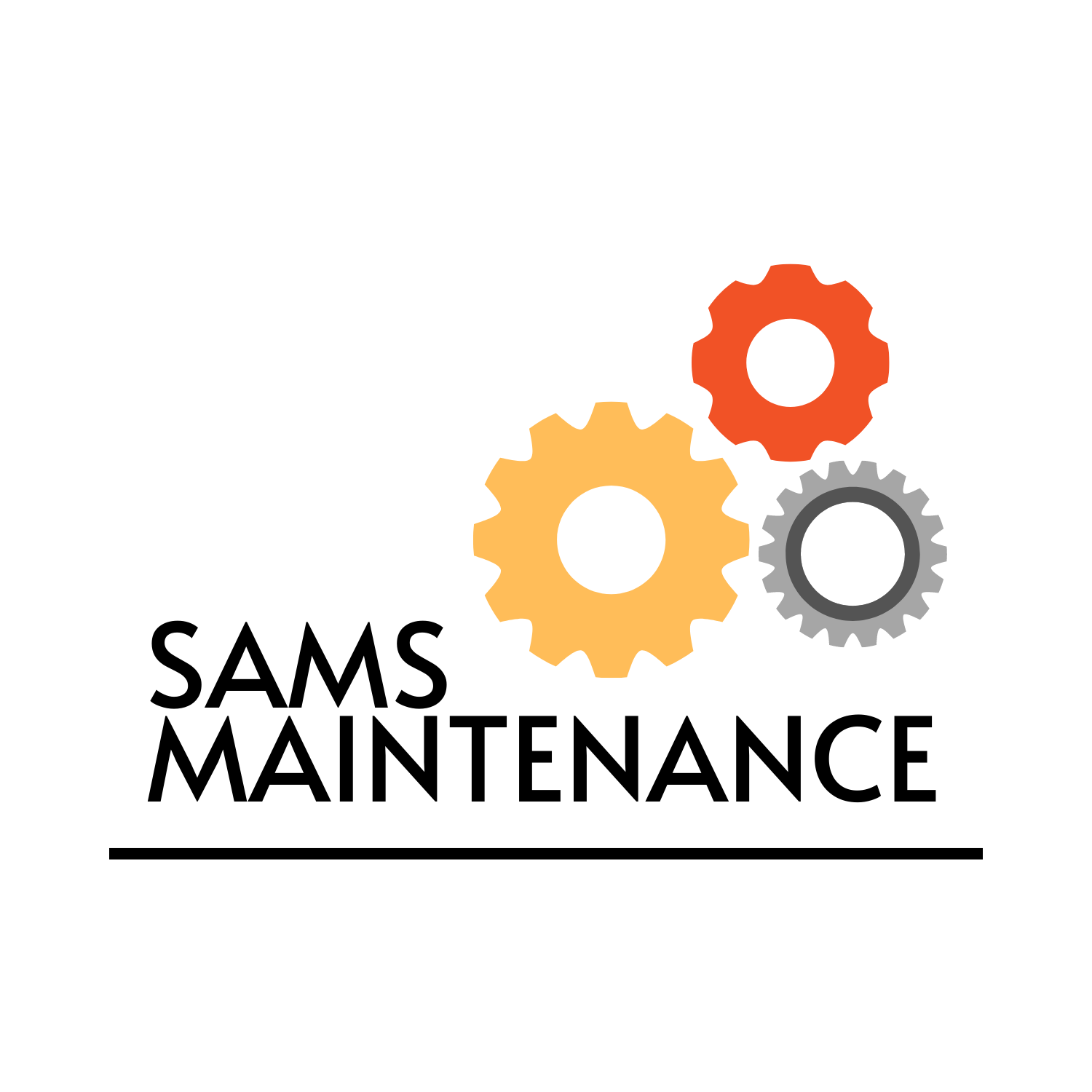As a homeowner, dealing with common household issues can be frustrating and costly, especially when it comes to hiring professionals for even the smallest repairs. However, by mastering simple house repairs, you can save money, time, and stress, while also gaining confidence in your ability to tackle everyday problems. From leaky faucets to clogged drains, and from loose screws to cracked tiles, there are numerous DIY tasks that every homeowner should know how to perform for simple and cost-effective house repairs.

Fixing Common Household Issues Without Hiring a Professional
As a homeowner, dealing with common household issues can be frustrating and costly. However, many of these problems can be fixed without hiring a professional, saving you time and money.
- Identify the Issue
- Gather Necessary Tools and Materials
- Follow Online Tutorials and Guides
- Consult Local Hardware Stores and Home Improvement Centers
- Practice Safety Precautions
- Consider DIY Kits and Products
- Don’t Be Afraid to Ask for Help
The first step in fixing a household issue is to identify what’s causing the problem. Take note of any symptoms, such as leaks, creaks, or unusual odors, and try to determine the source of the issue.
Once you’ve identified the issue, gather the necessary tools and materials to fix it. This may include items like a wrench, pliers, or a replacement part.
There are many online tutorials and guides available that can walk you through the process of fixing common household issues. Websites like YouTube, Home Depot, and Lowe’s offer a wealth of information and instructional videos.
If you’re unsure about how to fix a particular issue, consult local hardware stores and home improvement centers for advice. Employees at these stores often have extensive knowledge and can provide valuable guidance.
When working on household projects, always practice safety precautions. Wear protective gear, such as gloves and safety glasses, and ensure that the area is well-ventilated.
Diy kits and products can be a great option for fixing common household issues. These kits usually come with everything you need to complete the job, including instructions and materials.
If you’re unsure about how to fix a particular issue or feel uncomfortable tackling a project, don’t be afraid to ask for help. Reach out to friends, family members, or neighbors who may have experience with DIY projects.
Common Household Issues That Can Be Fixed Without a Professional
Some common household issues that can be fixed without a professional include:
- Leaky faucets
- Creaky doors and floors
- Loose or broken light fixtures
- Unusual odors or mold growth
- Broken appliances
Benefits of Fixing Household Issues Yourself
Fixing household issues yourself can have several benefits, including:
- Saving money
- Learning new skills
- Improving your sense of accomplishment
- Extending the life of your belongings
- Reducing waste and environmental impact
Conclusion
Fixing common household issues without hiring a professional requires patience, persistence, and practice. By following these steps and taking advantage of online resources and local expertise, you can save time and money while learning new skills and improving your sense of accomplishment.
Essential DIY Tasks Every Homeowner Should Know
As a homeowner, having basic DIY skills can save you thousands of dollars on household maintenance costs.
-
Leaky Faucet Repair
A leaky faucet may seem like a minor issue, but it can waste up to 20 gallons of water per day, increasing your water bill significantly.
To fix a leaky faucet, you’ll need to replace the worn-out O-ring or gasket. Turn off the water supply, disassemble the faucet, and replace the faulty part with a new one.
For a more detailed guide, check out our Faucet Repair Guide .
-
Caulk and Sealant Application
Applying caulk and sealants around windows, doors, and joints can help prevent air leaks, reduce energy bills, and keep pests out.
Choose the right type of caulk or sealant for your needs, and apply it according to the manufacturer’s instructions.
For more information on choosing the right caulk, visit our Caulk Guide .
-
Drain Cleaning
Clogged drains can cause backups and damage your pipes. To clean your drains, use a plunger or a drain snake to remove hair and debris.
If the clog persists, consider using a chemical drain cleaner or calling a professional plumber.
Learn more about drain cleaning techniques in our Drain Cleaning Guide .
-
Painting and Touch-ups
Maintaining your home’s exterior and interior requires regular painting and touch-ups.
Choose the right paint for your surface, prepare the area, and apply thin coats to avoid drips and unevenness.
Discover the best painting techniques and materials in our Painting Guide .
-
Light Fixture Replacement
Replacing light fixtures can update the look and feel of your home.
Turn off the power, remove the old fixture, and install the new one according to the manufacturer’s instructions.
Find step-by-step instructions for replacing light fixtures in our Light Fixtures Guide .
-
Door Hinge Replacement
Worn-out door hinges can cause squeaks and difficulties opening and closing doors.
Replace the hinges with new ones, making sure to align them properly and secure them tightly.
Get tips on replacing door hinges in our Hinges Guide .
-
Tile Grout Cleaning
Dirty grout between tiles can harbor bacteria and stains.
Use a grout cleaner or a mixture of baking soda and vinegar to remove dirt and grime.
Learn more about tile grout cleaning techniques in our Grout Cleaning Guide .
-
Smoke Detector Installation
Installing smoke detectors can save lives in case of a fire emergency.
Follow the manufacturer’s instructions to install the detector, test it regularly, and replace batteries as needed.
Discover the importance of smoke detectors in our Smoke Detectors Guide .
-
Weatherstripping Installation
Weatherstripping helps seal gaps around doors and windows, reducing heat loss and preventing drafts.
Choose the right type of weatherstripping for your needs, and apply it according to the manufacturer’s instructions.
Get tips on installing weatherstripping in our Weatherstripping Guide .
- Garbage Disposal Maintenance</hassistant

Top Simple House Repairs That Homeowners Can Tackle Themselves
To save money and time, many homeowners opt to take on simple house repairs themselves.
-
Leaky Faucets
A leaky faucet may seem like a minor issue, but it can waste a significant amount of water and increase your water bill.
Replacing the worn-out O-ring or gasket is usually a simple fix that requires minimal tools and expertise.
-
Creaky Doors
Creaky doors can be annoying and may indicate a larger issue with the door frame or hinges.
Adjusting the hinges or replacing the door sweep can often resolve the problem and eliminate the noise.
-
Loose Handles
Loose handles on cabinets or drawers can be frustrating and may lead to further damage if left unchecked.
Tightening the screws or replacing the handle altogether can restore functionality and prevent future issues.
-
Faulty Light Switches
A faulty light switch can cause electrical issues and pose a safety risk.
Replacing the switch with a new one is usually a straightforward process that requires basic electrical knowledge.
-
Dripping Ceiling Tiles
Dripping ceiling tiles can be a sign of a larger roofing issue, such as a leak or damaged insulation.
Identifying and addressing the root cause of the problem is crucial to preventing further damage and costly repairs.
-
Broken Window Panes
A broken window pane can compromise the security and energy efficiency of your home.
Replacing the glass or repairing the frame can be a cost-effective solution that maintains the integrity of your windows.
-
Moldy Bathrooms
Mold growth in bathrooms can be a health hazard and require professional remediation.
Preventing mold growth through regular cleaning and ventilation can save you time and money in the long run.
-
Worn-Out Door Locks
Worn-out door locks can compromise the security of your home and require replacement.
Upgrading to a new lock or repairing the existing one can provide peace of mind and protect your property.
-
Cracked Walls
Cracked walls can be a cosmetic issue or a sign of underlying structural problems.
Assessing the extent of the damage and addressing the root cause can prevent further deterioration and costly repairs.
-
Malfunctioning Thermostats
A malfunctioning thermostat can affect the comfort and energy efficiency of your home.
Replacing the thermostat or adjusting its settings can optimize your heating and cooling systems and reduce energy consumption.
By tackling these simple house repairs yourself, you can save money, time, and stress while maintaining the integrity and value of your home.

Essential Simple House Repairs Beginners Can Learn
As a homeowner, mastering basic home maintenance skills can save you time and money in the long run. At Sam’s Maintenance, we’re committed to helping you become self-sufficient in tackling common household issues.
-
Leaky Faucets
A dripping faucet may seem like a minor issue, but it can waste up to 20 gallons of water per day. To fix a leaky faucet, turn off the water supply, disassemble the faucet, and replace the worn-out parts.
-
Lose Door Handles
A loose door handle can be frustrating, but it’s often an easy fix. Check the screws holding the handle in place and tighten them if necessary. If the problem persists, consider replacing the handle altogether.
-
Clogged Drains
Clogged drains can cause backups and unpleasant odors. Use a plunger or plumber’s snake to clear blockages, and consider using a drain screen to catch hair and debris before they enter the pipes.
-
Faulty Light Fixtures
A flickering light fixture can be a safety hazard. Replace the bulb or fixture if it’s old or damaged, and check the wiring for any signs of wear or damage.
-
Loose Baseboards
Loose baseboards can indicate a larger issue with your home’s foundation. Check the caulk and weatherstripping around the baseboards and reapply as needed. If the problem persists, consult a professional.
-
Broken Window Screens
A torn window screen can let pests and debris into your home. Remove the old screen and replace it with a new one, making sure to secure it properly.
-
Damaged Caulk
Cracked or missing caulk can lead to water damage and mold growth. Reapply caulk around windows, doors, and joints, making sure to clean the area thoroughly before applying a new bead.
-
Worn-Out Door Sweeps
A worn-out door sweep can let cold air in and warm air out. Replace the sweep with a new one, making sure to adjust it properly to fit your door.
-
Loose Outlet Covers
Loose outlet covers can be a fire hazard. Check the outlet covers and replace them if they’re damaged or worn out.
-
Blocked Vents
Blocked vents can reduce airflow and increase energy bills. Clean the vents and filters regularly, and consider installing new ones if they’re damaged or clogged.
By mastering these essential simple house repairs, you’ll be well on your way to becoming a self-sufficient homeowner. Remember to always follow safety guidelines and consult professionals if you’re unsure about any repair.
Simple and Effective DIY Solutions for Common House Repairs
As a homeowner, dealing with minor issues around the house can be frustrating and costly if left unchecked. Fortunately, many common problems have easy fixes that don’t require hiring a professional.
- Leaky Faucets: A dripping faucet may seem insignificant, but it can waste up to 20 gallons of water per day. To fix a leaky faucet, turn off the water supply, disassemble the faucet, and replace the worn-out O-ring or gasket.
- Creaky Doors: Creaky doors can be caused by loose hinges or worn-out door frames. To fix a creaky door, tighten the hinges, apply lubricant to the hinge pins, or replace the door frame if necessary.
- Loose Toilet Handles: A loose toilet handle can cause the toilet to run continuously, wasting water and increasing your utility bills. To fix a loose toilet handle, adjust the chain length, tighten the handle screws, or replace the handle if necessary.
- Faulty Light Switches: Faulty light switches can cause electrical shocks or fires. To fix a faulty light switch, replace the switch with a new one, check the wiring connections, or consult an electrician if unsure.
- Broken Window Panes: Broken window panes can compromise your home’s security and energy efficiency. To fix a broken window pane, replace the glass with a new one, seal the edges with caulk, or consult a glazier if necessary.
- Dripping Ceiling Tiles: Dripping ceiling tiles can indicate a roof leak or condensation issue. To fix a dripping ceiling tile, inspect the roof for leaks, repair or replace the damaged area, or install a dehumidifier to reduce moisture levels.
- Sticky Drawers: Sticky drawers can be caused by worn-out drawer slides or excessive dust buildup. To fix sticky drawers, clean the drawer slides, apply lubricant, or replace the drawer slides if necessary.
- Loose Door Handles: Loose door handles can compromise your home’s security and safety. To fix a loose door handle, tighten the screws, adjust the handle alignment, or replace the handle if necessary.
- Faulty Thermostats: Faulty thermostats can cause uneven heating or cooling, wasting energy and increasing your utility bills. To fix a faulty thermostat, replace the thermostat with a new one, calibrate the temperature settings, or consult a HVAC technician if unsure.
- Cracked Walls: Cracked walls can indicate structural damage or settlement issues. To fix cracked walls, inspect the foundation, repair or replace the damaged area, or consult a contractor if necessary.
By addressing these common issues promptly, you can save money, prevent further damage, and enjoy a safer and more comfortable living space.
Additional Tips and Resources:
For more DIY solutions and expert advice on home maintenance, visit our website at SamsMaintenance.com .
Recommended Tools and Materials:
To tackle these DIY projects, you’ll need basic tools and materials, such as:
- Torx screwdrivers
- Pliers and wrenches
- Lubricants and adhesives
- New parts and replacement components
Remember to always follow safety guidelines and manufacturer instructions when working with power tools and hazardous materials.

Tackling Simple House Repairs with Ease
As a homeowner, dealing with minor issues around the house can be frustrating and overwhelming, especially when you’re short on time and budget.
- Assess the Issue
- Gather Essential Tools
- Follow Safety Precautions
- Consult Online Resources
- Seek Professional Help When Necessary
Before diving into repairs, take a moment to identify the problem and its cause. This will help you determine the necessary materials and tools required for the job.
You don’t need a vast array of specialized equipment to tackle simple house repairs. A basic toolkit consisting of a hammer, screwdrivers, pliers, and a wrench should suffice for most tasks.
When working with power tools or handling electrical components, always wear protective gear, including gloves, safety glasses, and a dust mask.
Websites like Family Handyman offer a wealth of DIY tutorials, repair guides, and troubleshooting tips to help you navigate common household issues.
If you’re unsure about a particular repair or feel uncomfortable tackling it yourself, consider hiring a professional contractor or handyman service.
Common Household Issues and Their Solutions
- Leaky Faucets
- Clogged Drains
- Loose Door Handles
To fix a leaky faucet, turn off the water supply, disassemble the faucet, and replace the worn-out O-ring or gasket.
Use a drain snake or plumber’s auger to remove blockages, then pour baking soda and vinegar down the drain to dissolve any remaining debris.
Screw the handle back onto the door, tightening the screws until secure. If the issue persists, check for loose hinges or misaligned doors.
Conclusion
By following these simple steps and consulting online resources, you’ll be well-equipped to tackle common household issues and save money on costly repairs. Remember to always prioritize safety and seek professional help when needed.

0 Comments